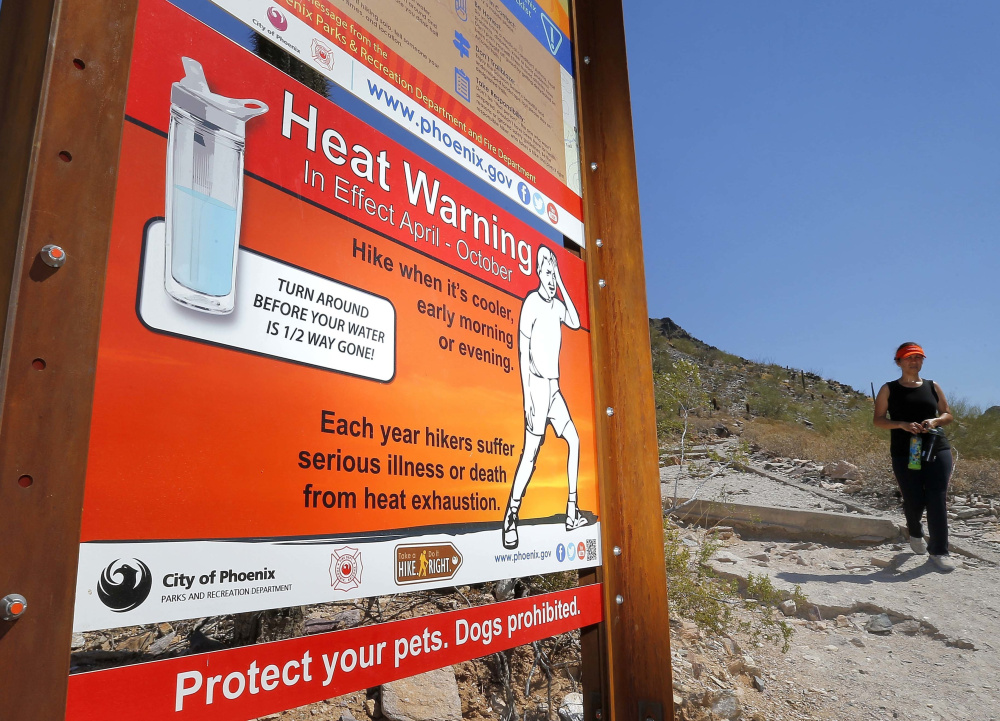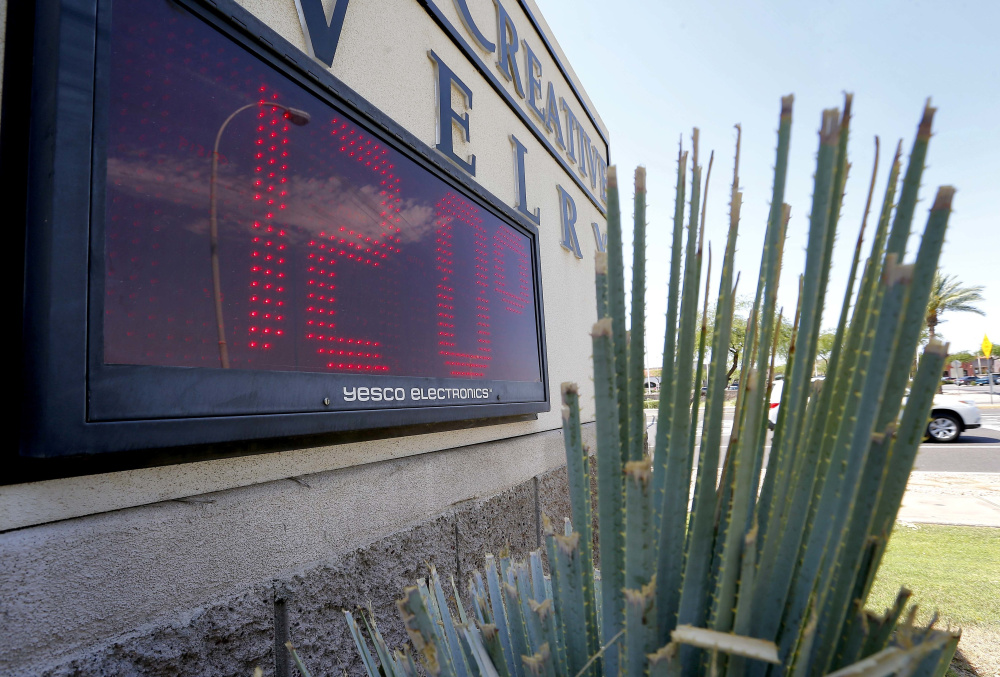PHOENIX — Phoenix changed in a matter of decades from a scorching desert outpost into one of the largest cities in the nation. The Arizona city is a horizon of asphalt, air conditioning and historic indifference to the pitfalls of putting 1.5 million people in a place that gets just 8 inches of rain a year and where the temperature routinely exceeds 100 degrees.
Now the city faces a reckoning. Climate change is expected to further expose the glaring gap between how the city lives and what it can sustain. The future, scientists say, will be even hotter and drier, the monsoons more mercurial. Summertime highs could reach 130 degrees before the end of the century.
“My colleagues and I wonder about the future habitability of Phoenix all the time,” said David Hondula, an Arizona State University climatologist who studies the impact of heat on health.
As President Trump rolls back the country’s commitments on climate change, Phoenix is one of many cities facing daunting predictions of what lies ahead, and most have few resources with which to prepare. Public health and economic prosperity are both at risk.
Phoenix has taken steps to react to climate change – expanding public transit and bicycle lanes, replacing municipal fleets with electric vehicles, putting low-energy bulbs in streetlights and setting goals for reducing carbon emissions.
Yet some cities are now exploring ambitious efforts to adapt to what seems to be the inevitable reality of a warmer future.
Many have created climate resilience programs. Los Angeles Mayor Eric Garcetti has pledged to reduce the average temperature in the city by 3 degrees over the next two decades. To meet the goal, scientists are exploring the benefits of planting trees, installing “cool pavement” and “cool roofs.”
Some coastal areas are considering major expenditures – including New York, where multibillion-dollar sea barriers are being planned, and San Francisco, which projects that 6 percent of the city will be inundated by the end of the century. Miami Beach is spending hundreds of millions of dollars to raise streets and install pumps to prevent and relieve flooding.
Phoenix, far from rising seas, faces a different challenge.
The average high in August now exceeds 104 degrees, but 110 is not uncommon, and the temperature has hit 120 more than once. Last summer, a study by Climate Central and the Weather Channel found that the average temperature in Phoenix had increased 1.12 degrees over the previous half-century. No major city’s temperatures rose more – and no major city regularly reached such scorching highs in the first place.
Phoenix makes its problem worse in several ways. Development has created a local “urban heat island effect,” which limits natural nighttime cooling; only about 11 percent of the city is covered by trees, which provide essential shade; and the city’s sprawl creates emissions that contribute to the overall heating of the atmosphere.
Water is another challenge. Phoenix has steadily improved conservation. Even as the population soared over the past half-century, the region now uses slightly less water than it did in the 1960s. It also has a formidable water supply saved in an elaborate underground storage system created in the 1980s.
But the sources that feed the supply and the storage – primarily the Colorado and Salt rivers – are at risk of long droughts in the decades to come, according to climate forecasts.
“We don’t have as much water to put underground as we used to, and we see the handwriting on the wall that that’s going to continue,” said Tom Buschatzke, director of the Arizona Department of Water Resources.
The political climate is brutal as well. Many state leaders do not accept climate science. The Republican-controlled Legislature is so resistant that it fights local action.
Last year, it passed a law to prevent cities from requiring businesses to report how much energy they use, though such systems are mandatory in some cities in other states.
Send questions/comments to the editors.




Success. Please wait for the page to reload. If the page does not reload within 5 seconds, please refresh the page.
Enter your email and password to access comments.
Hi, to comment on stories you must . This profile is in addition to your subscription and website login.
Already have a commenting profile? .
Invalid username/password.
Please check your email to confirm and complete your registration.
Only subscribers are eligible to post comments. Please subscribe or login first for digital access. Here’s why.
Use the form below to reset your password. When you've submitted your account email, we will send an email with a reset code.